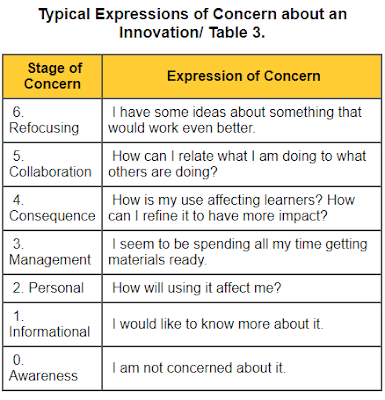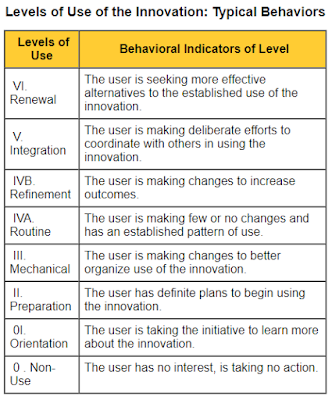Assignment 2: Collaborating to evolve teaching practice
 |
| Quote from http://www.doug-johnson.com/dougwri/collaboration-and-reflection.html Image created in Wordswag app by Holly Broadland |
Collaboration
It is widely acknowledged that there are huge benefits to collaboration in school libraries. The Canadian Library Association's Leading Learning document states, "The library learning commons plays a key role in cultivating and facilitating collaboration to provide rich experiential learning opportunities. It provides not only a physical space to develop skills and engage learners, but is also a portal to virtual connections, both local and global. It is important to acknowledge the diverse needs and contributions of all players within the school learning commons community, both in terms of resource formats and access to information and collaboration opportunities." (Canadian Library Association, 2004).
My current position is as a classroom teacher in a primary class. Unfortunately, I am not able to collaborate with my teacher librarian during school hours because his schedule is fully booked with prep coverage on the days I teach. In order to get some insight into collaboration, I spoke with several experienced teacher librarians in my district as well as a classroom teacher who had recently been hired by the board. One excellent piece of advice I received was to attend primary and intermediate meetings in order to hear what the teachers are doing and to be able to share new books and invite teachers to collaborate with you.
My current position is as a classroom teacher in a primary class. Unfortunately, I am not able to collaborate with my teacher librarian during school hours because his schedule is fully booked with prep coverage on the days I teach. In order to get some insight into collaboration, I spoke with several experienced teacher librarians in my district as well as a classroom teacher who had recently been hired by the board. One excellent piece of advice I received was to attend primary and intermediate meetings in order to hear what the teachers are doing and to be able to share new books and invite teachers to collaborate with you.
Reality Check
In the Vancouver School Board (VSB) School Library Resource Centre Handbook, it states that "teacher-librarians work collaboratively with colleagues to plan, teach, and evaluate resource-based inquiry units that promote student achievement."(VTLA, 2008). However, just before the instructional role of the teacher librarian is described, it is noted that "the following description of the instructional role of a Teacher-Librarian depends upon there being adequate budgets, facilities, and staffing." (VTLA, 2008). I believe this is a key point to note as without time for collaboration being built into the librarian's schedule, this essential role of the teacher librarian cannot occur.
In recent years, many school districts have seen reductions in overall teacher librarian time and more of the teacher librarian's time being allocated to prep coverage or resource. In my district this year, teacher librarians are being pulled from the library into the classroom to cover for a TOC shortage. I remain hopeful that the pendulum will shift in the near future and more collaborative time will be restored to teacher librarian's schedules. In this paper, I will assume that the teacher librarian has a reasonable amount of collaborative time in their schedule.
In recent years, many school districts have seen reductions in overall teacher librarian time and more of the teacher librarian's time being allocated to prep coverage or resource. In my district this year, teacher librarians are being pulled from the library into the classroom to cover for a TOC shortage. I remain hopeful that the pendulum will shift in the near future and more collaborative time will be restored to teacher librarian's schedules. In this paper, I will assume that the teacher librarian has a reasonable amount of collaborative time in their schedule.
Teacher A
Description
Description
Teacher A is newly graduated from their teacher education
program and has just started their first teaching job as a Grade 3 teacher.
They are open to learning new things and are feeling overwhelmed trying to get
a handle on all of the aspects of the job.
During their recent practicum, they
were at a school with a part-time teacher librarian who covered preps for much
of the week and had extremely limited collaborative time. Due to the schedule
at their practicum school, Teacher A did not have the experience of working collaboratively
with the teacher librarian. They are unfamiliar with the ways a teacher
librarian can make their life easier and help them meet their teaching goals.
This teacher is comfortable with using a range of technology and often books an iPad cart for their class. They listened to the teacher librarian’s talk
about our district's switch to a new OPAC system over the summer and have used our new
website to search the catalogue from home and create booklists for inquiry
projects. They are planning an inquiry based Social Studies unit on indigenous
peoples and would like support in teaching the student about reliable online sources
of information. Teacher A has not had time to research the online databases our district subscribes to and doesn't know where to start. This teacher is comfortable with learning new things and
experimenting with novel teaching ideas.
 |
| Image from http://www.nationalacademies.org/rise/backg4a.htm |
 |
| Image from http://www.nationalacademies.org/rise/backg4a.htm |
Assessment
According to the Concerns-Based Adoption Model of change, in terms of use of online databases, Teacher A is at Level 1: Informational in the Stages of Concern and at Level I: Orientation in the Levels of Use. Although they have not yet had the chance to work collaboratively with the teacher librarian, they are interested in learning more about how this relationship could work and they're curious about the reference resources available to their class. It's not surprising that a new teacher wouldn't have knowledge about how a teacher librarian can support their teaching. As Hartzell states in "The Invisible Librarian," "many teachers and administrators are blind to the full range of library services because very few of their training programs investigate the potential and role of the library in curriculum, instruction, staff development, or administrative support" (Hartzell, 1997).
Fortunately, despite this teacher's limited knowledge of the ways a teacher librarian can make their life easier by teaching information literacy skills, selecting relevant resources, and teaching collaboratively, Teacher A is willing to change. They are likely to move quickly through two levels of the CBAM model after working with the teacher librarian for a term.
 |
| Image from https://pixabay.com/en/checklist-collaboration-characters-150938/ |
Steps to Take
- teacher librarian will meet with Teacher A and listen to their goals and concerns regarding the inquiry unit they are planning
- teacher librarian will create a draft unit plan complete with schedule, information literacy lessons that will be taught by TL, and digital and print resources that would be helpful
- TL and Teacher A will schedule a weekly collaborative time in the third term when Teacher A's class can come to the library for their inquiry project
- TL will connect Teacher A with Aboriginal Education Enhancement Worker who supports the school to further increase collaborative opportunities
- using the library's laptops, TL will introduce the Grade 3 class to online databases our district subscribes to such as World Book Kids and National Geographic Kids
- TL will offer MakerSpace materials as a hands-on way for students to show their learning. This will show the teacher and their students some of the interesting materials (LEGO, Keva planks, plasticene) that the library has available
- students will share their learning about indigenous peoples using a variety of presentation methods. Invite the principal to sit in to see the learning that has resulted from this successful collaboration.
- TL and Teacher A will reflect on the what they liked and what they'd change about the unit
- Hopefully, Teacher A will speak positively about this experience to other teachers and interest in collaboration will increase at the school
Teacher B
Description
Description
Teacher B is an experienced educator who teaches a Grade 2 class. She has been a primary teacher for approximately thirty years and has witnessed many changes in curriculum, teaching philosophy, and technology in classrooms. She is nearing retirement and is well-respected by her colleagues for the excellent literacy and fine arts work she does with her students. This teacher often welcomes volunteers and subject area experts into her classroom and is open to collaboration with other teachers. Teacher B teaches about penguins every year and is comfortable with the books, worksheets, and art projects she has used in previous years. She asks the teacher librarian to pull fiction and non-fiction penguin books each winter and her students write and draw about penguins to share their learning. Teacher B is not familiar with the digital resources available through the library and doesn't use the iPads or laptops. She is a self-confessed technophobe and does not have Apple TV or a SmartBoard in her classroom.
Assessment
Teacher B is at Level 0: Awareness in the CBAM model's Stages of Concern and she is also at Level 0: Non-use in the Levels of Use of the Innovation with regards to technology use in the library. Although she has worked collaboratively with the teacher librarian in years past, the research and presentation has always been print-based. In this case, we need to work slowly and respectfully address Teacher B's concerns with technology before jumping in to using online databases or iPads with the students. As Loucks-Horsley states, "Often, we get to the how-to-do-it before addressing self-concerns. We want to focus on student learning before teachers are comfortable with the materials and strategies." (Loucks-Horsley, 1996). However, we'll have much more success if we allow the teacher to become familiar with the new technology first before they are attempting to teach it to their class. Just as we expect our students to learn in different ways and at different paces, we need to recognize that teachers are learners too and they have a variety of needs when it comes to learning technology.
Steps to Take
- teacher librarian and Teacher B will collaborate on the penguin unit
- in terms of instructional design, the teacher librarian will "nudge" Teacher B towards inquiry by suggesting one small tweak of the traditional research project. As Kristin Fontichiaro writes in "Nudging Toward Inquiry: Re-Envisioning Existing Research Projects", "One or two suggestions will probably be received better than a bundle. Perhaps merely reframing the assignment, changing the product, adding self-reflection, or changing how questions are developed is enough to help the teacher break out of a rut that is no longer best practices." (Fontichiaro, 2009). In this case, the change will come from the product being an ebook about penguins rather than a paper booklet.
- teacher librarian will demonstrate how they can make Teacher B's life easier by leading lessons on online databases and the Book Creator app for presentations to supplement the print-based lessons Teacher B will teach
- teacher librarian will conduct a lunch and learn for staff to refresh everyone on how to access the online databases and will send out a follow-up cheat sheet via email and paper
- teacher librarian will invite Grade 5 students from the buddy class to model use of iPads and mentor younger students in creating their penguin books using the Book Creator app
- teacher librarian will create an online jumping off point for students with links to databases, reliable websites, and sources of penguin photos
- teacher librarian will watch for technology-related professional development opportunities and forward them to Teacher B
- the goal is to gently guide Teacher B from stage zero to stage one on the CBAM model.
Conclusion
In summary, I agree with Doug Johnson who says, "Build slowly, but meaningfully. Most school cultures have been formed over years, if not decades. The expectation that the librarian will immediately become an accepted, valued collaborator on every classroom project or activity is unrealistic. But this does not mean that this should not be the librarian’s goal and that steps should not be taken toward achieving it" (Johnson, 2013). Experienced teacher librarians have shared the same advice, baby steps towards a collaborative school culture are valuable and you need to have patience and wait for teacher to share their positive experiences with their peers in order to build your collaborative network. I look forward to putting this advice into practice in my own library in future.
Assessment
Teacher B is at Level 0: Awareness in the CBAM model's Stages of Concern and she is also at Level 0: Non-use in the Levels of Use of the Innovation with regards to technology use in the library. Although she has worked collaboratively with the teacher librarian in years past, the research and presentation has always been print-based. In this case, we need to work slowly and respectfully address Teacher B's concerns with technology before jumping in to using online databases or iPads with the students. As Loucks-Horsley states, "Often, we get to the how-to-do-it before addressing self-concerns. We want to focus on student learning before teachers are comfortable with the materials and strategies." (Loucks-Horsley, 1996). However, we'll have much more success if we allow the teacher to become familiar with the new technology first before they are attempting to teach it to their class. Just as we expect our students to learn in different ways and at different paces, we need to recognize that teachers are learners too and they have a variety of needs when it comes to learning technology.
 |
| Image from https://pixabay.com/en/penguin-baby-antarctic-life-animal-429125/ |
Steps to Take
- teacher librarian and Teacher B will collaborate on the penguin unit
- in terms of instructional design, the teacher librarian will "nudge" Teacher B towards inquiry by suggesting one small tweak of the traditional research project. As Kristin Fontichiaro writes in "Nudging Toward Inquiry: Re-Envisioning Existing Research Projects", "One or two suggestions will probably be received better than a bundle. Perhaps merely reframing the assignment, changing the product, adding self-reflection, or changing how questions are developed is enough to help the teacher break out of a rut that is no longer best practices." (Fontichiaro, 2009). In this case, the change will come from the product being an ebook about penguins rather than a paper booklet.
- teacher librarian will demonstrate how they can make Teacher B's life easier by leading lessons on online databases and the Book Creator app for presentations to supplement the print-based lessons Teacher B will teach
- teacher librarian will conduct a lunch and learn for staff to refresh everyone on how to access the online databases and will send out a follow-up cheat sheet via email and paper
- teacher librarian will invite Grade 5 students from the buddy class to model use of iPads and mentor younger students in creating their penguin books using the Book Creator app
- teacher librarian will create an online jumping off point for students with links to databases, reliable websites, and sources of penguin photos
- teacher librarian will watch for technology-related professional development opportunities and forward them to Teacher B
- the goal is to gently guide Teacher B from stage zero to stage one on the CBAM model.
Conclusion
In summary, I agree with Doug Johnson who says, "Build slowly, but meaningfully. Most school cultures have been formed over years, if not decades. The expectation that the librarian will immediately become an accepted, valued collaborator on every classroom project or activity is unrealistic. But this does not mean that this should not be the librarian’s goal and that steps should not be taken toward achieving it" (Johnson, 2013). Experienced teacher librarians have shared the same advice, baby steps towards a collaborative school culture are valuable and you need to have patience and wait for teacher to share their positive experiences with their peers in order to build your collaborative network. I look forward to putting this advice into practice in my own library in future.
Works Cited
Canadian Library Association. (2014). Leading Learning: Standards of Practice for School Library Learning Commons in Canada. Ottawa, ON: Canadian Library Association.
Fontichiaro, K. (2009). Nudging toward Inquiry: Re-envisioning Existing Research Projects. School Library Monthly, 26(1), 17-19.
Hartzell, G. N. (1997). The invisible school librarian. School Library Journal, 43(11), 24-29.
Fontichiaro, K. (2009). Nudging toward Inquiry: Re-envisioning Existing Research Projects. School Library Monthly, 26(1), 17-19.
Hartzell, G. N. (1997). The invisible school librarian. School Library Journal, 43(11), 24-29.
Johnson, D. (2013). The indispensable librarian surviving and thriving in school libraries in the information age. Santa Barbara, CA: Linworth.
Loucks-Horsley, S. (1996). The Concerns-Based Adoption Model (CBAM): A Model for Change in Individuals. Retrieved from http://www.nationalacademies.org/rise/backg4a.htm
Vancouver Teacher Librarians Association. (2008). VSB School Library Resource Centre Handbook. Retrieved from http://tlspecial.pbworks.com/w/file/fetch/50081661/Roles%20and%20Responsibilities%20of%20TLs.pdf


Comments
Post a Comment